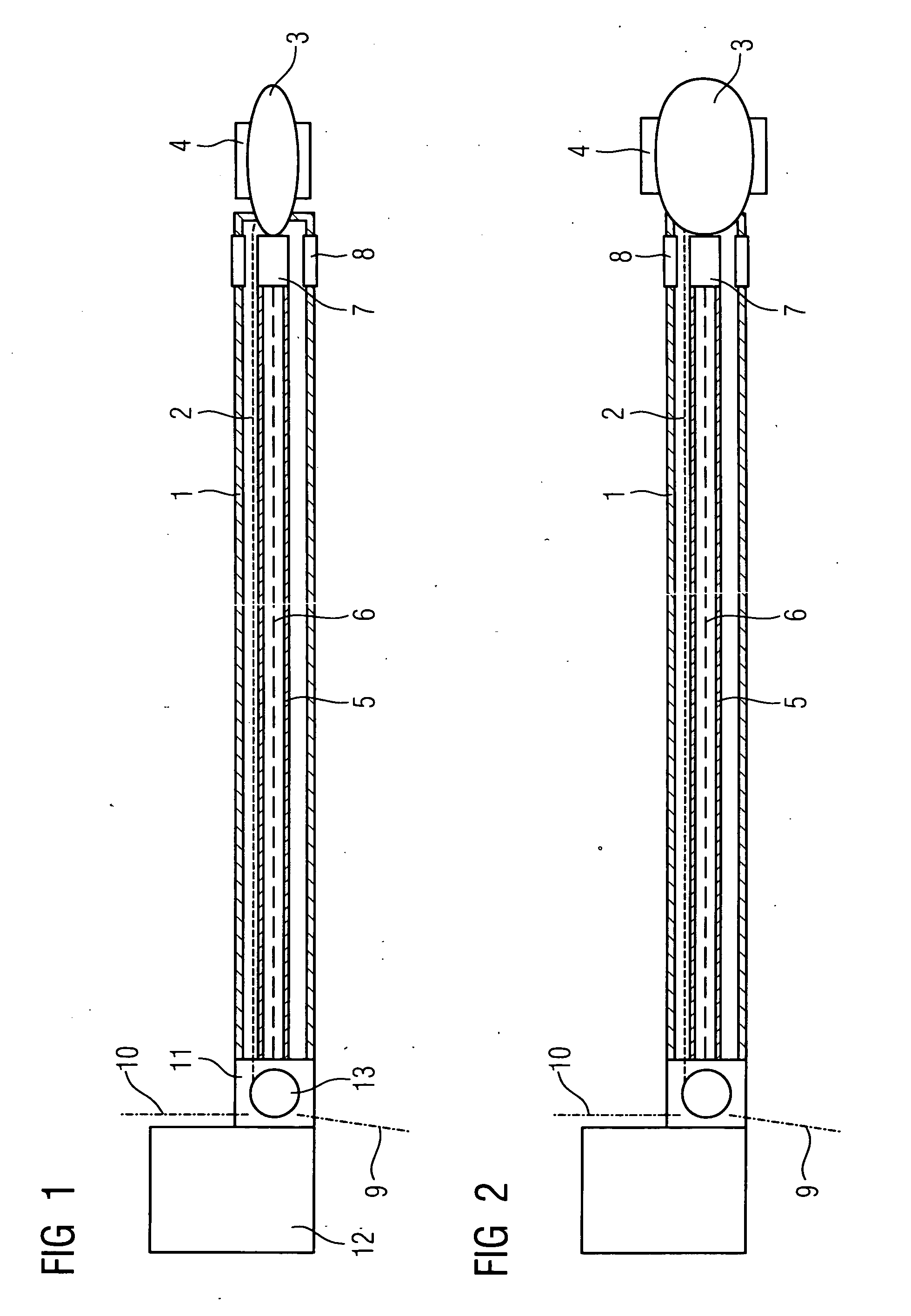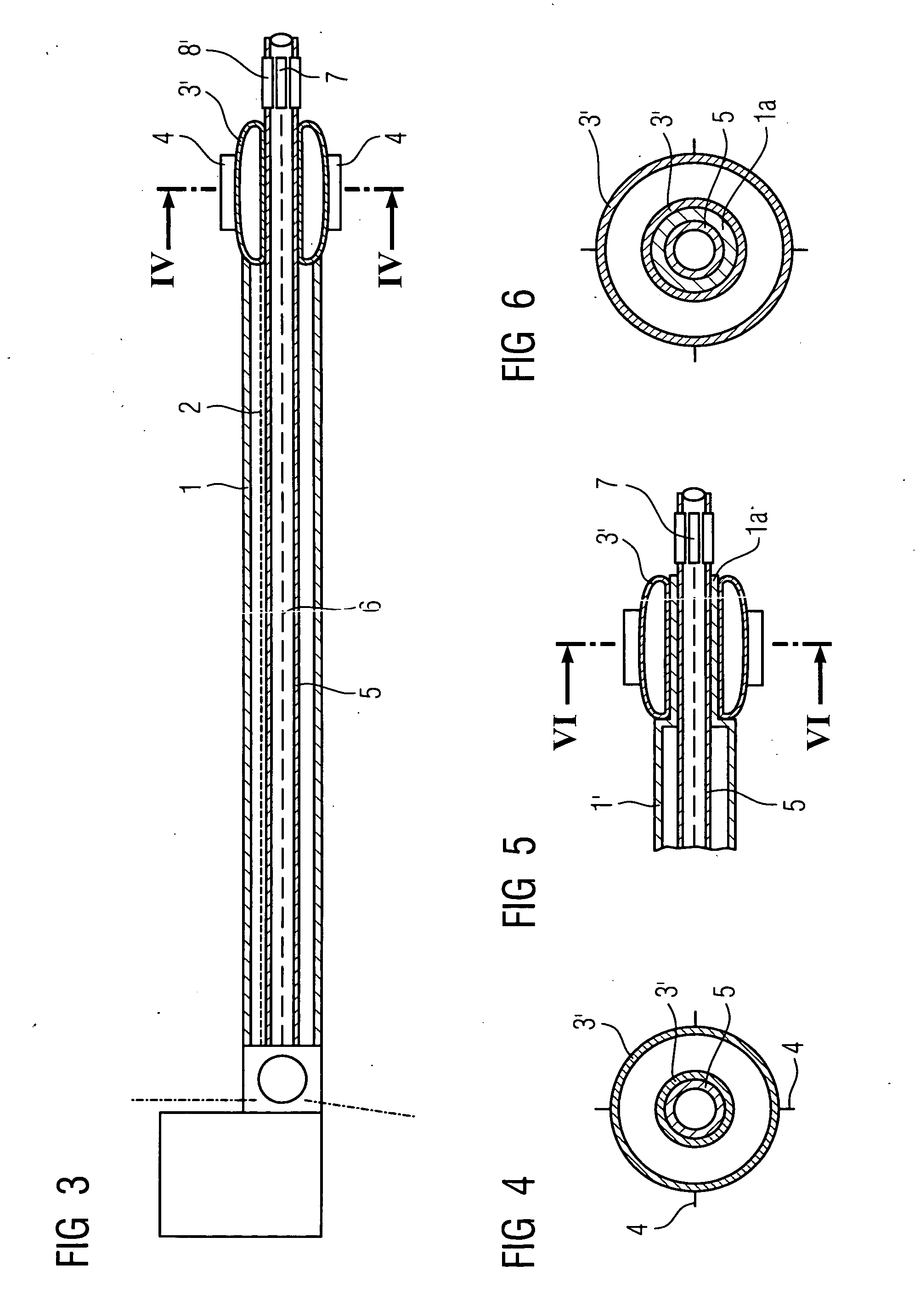Device for implementing a cutting balloon intervention with IVUS monitoring
- Summary
- Abstract
- Description
- Claims
- Application Information
AI Technical Summary
Benefits of technology
Problems solved by technology
Method used
Image
Examples
Embodiment Construction
[0041] On the basis of FIG. 1 and 2 it is possible to identify, in a basic schematic diagram, the construction and functionality of the cutting-balloon catheter with integrated IVUS monitoring to be used for stenosis removal according to the invention. An inflation line 2 for inflating the cutting balloon 3 that is fastened at the distal end of the flexible catheter sheath 1, is disposed within said catheter sheath 1, with a plurality—in particular three or four—of cutting blades 4, being mounted on the outer surface of said cutting balloon and arranged in a manner essentially parallel to the axis. When the balloon is inflated these blades 4 make longitudinal incisions into the vascular deposits, or “shave” plaque from the vascular wall, before the coronary artery is dilated by the balloon.
[0042] In addition to the inflation line 2 the flexible catheter sheath 1 also accommodates a hollow flexible drive shaft 5 accommodating an IVUS signal line 6 for an IVUS sensor 7, said IVUS sen...
PUM
 Login to View More
Login to View More Abstract
Description
Claims
Application Information
 Login to View More
Login to View More - R&D
- Intellectual Property
- Life Sciences
- Materials
- Tech Scout
- Unparalleled Data Quality
- Higher Quality Content
- 60% Fewer Hallucinations
Browse by: Latest US Patents, China's latest patents, Technical Efficacy Thesaurus, Application Domain, Technology Topic, Popular Technical Reports.
© 2025 PatSnap. All rights reserved.Legal|Privacy policy|Modern Slavery Act Transparency Statement|Sitemap|About US| Contact US: help@patsnap.com



